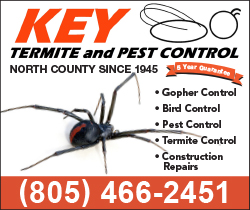Rattlesnakes not an increasing problem, but watch for mountain lions and bears

SLO Animal Services Manager Eric Anderson said that it is more likely that mountain lions and bears will be trekking closer to homes on the search for food and water during this summer’s drought and it is possible that snakes could follow those larger predators in the search.
“During drought periods, animals come into areas where people are because they are in search of water or food sources,” Anderson said.
Dr. Stuart Heard of California Poison Control Systems said that no calls in regards to rattlesnakes have come in for SLO County. “It doesn’t mean there aren’t rattlesnake bites, we just haven’t been called,” Heard said.
SLO County Sheriff’s spokesman Tony Cipolla echoed Heard in that no calls regarding rattlesnakes or rattlesnakes bites have come in recently.
Year-to-date for the entire state, 257 calls have come in to California Poison Control, 188 of those for human exposure and four for animal exposure. In 2013, from Jan. 1 through July 28, 220 calls were received, 189 for human exposure and five for animals. He said that people were worried that there would be an increase due to the drought, but the numbers aren’t showing an increase.
The California Poison Control System is a single toll-free 800 number that is available to all areas of California. By calling 1-800-222-1222 anywhere in California, callers can obtain emergency information on swallowing poison, eye or skin irritation from toxic substances, inhalation of noxious fumes or vapors, animal, insect, snake and spider bites, food or mushroom poisoning, drug reactions or attempted suicides or drug overdoses. Heard said that the organization does not have to be called in every case, so not every case is recorded. It is available for anyone, especially people in hospitals and emergency rooms, to call with questions.
Heard said that even without an increase of rattlesnake bites, it is possible that there could be more rattlesnakes, so people need to exercise caution. “You just have to be very alert,” Heard said.
Some tips include:
- Stay on trails when hiking, away from underbrush and tall weeds.
- Do not touch or disturb a snake, even if it appears dead.
- Carefully inspect logs or rocks before sitting on them.
- Never hike alone in remote areas. Always have someone with you who can assist in an emergency.
- Teach children to respect snakes and to leave them alone.
If you, or someone you know, is bitten by a rattlesnake:
- Get immediate medical attention.
- Do not apply ice; do not use a tourniquet or constricting band.
- Do not try to suck out the venom; do not use any device to cut or slice the bite site.
- Keep calm, and keep the affected extremity elevated during transport to a medical facility.




















